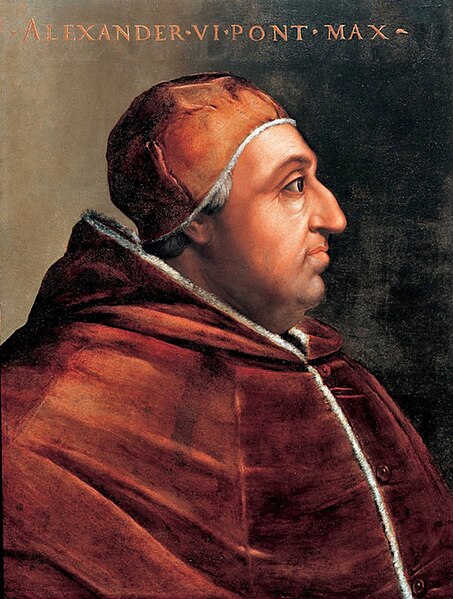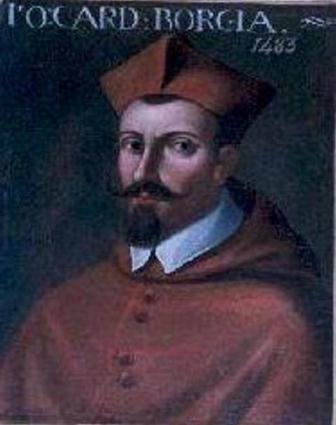 |
| Rivaldino |
After Girolamo
When the
Orsi brothers spoke to the town councillors it was decided to submit allegiance
to the pope. The council also refused to take action against Caterina,
reminding the conspirators that Caterina’s Milanese relations would not be
pleased. A solution must not;
‘Further wound or irritate
the Countess. That would be not only barbarous and inhuman, but would draw down
fatal consequences upon the city, she being of subtle mind and of that high
courage that was known to all, indomitable of spirit and inexorable in
vengeance.’[i]
After
several days imprisonment Caterina was taken to the fortress where the Castellan
Tomasso Feo allowed her entrance as previously agreed between the two, leaving
the remainder of her family in rebel hands.
 |
| Cesena |
The rebels
threatened to cut Ottaviano into pieces unless Caterina surrender. She told
them, with an obscene gesture, that she had the wherewithal to make more
children. The pope sent Bishop Giacomo Savelli[ii]
with two hundred soldiers to liaise with the rebels. Savelli was able to
safeguard Caterina’s relatives against rebel demands to kill them in front of
the fortress in an attempt to get Caterina to hand it over. Bishop Savelli had
Caterina’s mother and sisters transferred to the safety of Cesena and increased the guard on her children.
Savelli was
waiting for papal reinforcements that did not arrive. Innocent was unable to
decide what action to take; while not wanting to upset the powerful Sforza
family he toyed with the idea of taking Forli and handing it over to his son Franchescetto Cybo. After a period of stalemate Innocent announced that
he had appointed Cardinal Raffaele Riario as governor of Forli.
On 29th
April 1488 12,000 men appeared outside Forli’s wall; a small contingent of the
Milanese army. A ducal emissary demanded the return of Forli to the Riarios.
The citizens had little choice than to do as the Milanese demanded, driving off
the Orsi[iii],
and Caterina was reunited with her children.
Consolidation
 |
| Caterina Sforza |
Caterina
decided to be magnanimous in victory and instead of allowing her uncle’s troops
to sack the town sent them home, much to their dismay[iv].
Girolamo’s body was obtained and sent to Imola for burial. On 18th
July 1488 Innocent issued papal confirmation of Ottaviano’s right to be Lord of
Forli and Imola, until the end of his family line. Caterina was to act as his
regent. It is very possible that Cardinal Raffaele Riario was involved in
persuading Innocent to change his mind.
Caterina was
still young and her beauty was such that, according to one chronicler;
‘Words fail to describe her
glorious beauty and graceful manner.’[v]
The eldest
Ordelaffi, hoping to regain Forli for his family, had already proposed that he
marry Caterina. When word got out Caterina was inundated with disapproving
letters from the pope, Caterina’s uncle[vi],
Lorenzo de’ Medici and Cardinal Riario. The pope’s letter was self-serving; he
was hoping he could override his grant of Forli to Ottaviano and enable him to
present the lordship to his son.
Following a
summer in the country with Ordelaffi, Caterina returned to Forli to assure her
relatives and well-wishers that she
had no intention of marriage, or of handing power to anyone else. She turned to
good works to add lustre to her reputation, helping to build a church dedicated
to the Virgin Mary following a miracle at nearby Piratello. She also started on
making alliances with other noble families through her children, choosing four
year old Astore Manfredi[vii], Lord of Faenza, as husband for her daughter Bianca.
A Stepfather for the Lord of Forli
 |
| Fortress at Forlimpopoli |
Caterina was
concerned about the safety of the fortresses she held for her son. Trouble with
the Castellan of Imola over money owed to him by Girolamo resulted in her being
locked out of the fortress until Cardinal Riario stepped in to negotiate
between Caterina and the Castellan. Caterina placed her stepfather Gian Pietro
Landriani as the fortress’ new Castellan while her stepbrother Piero Landriani
was made Castellan of Forlimpopoli[viii].
Caterina
also doubted Tomasso Feo, despite his support for her during the 1488 crisis.
She engineered his arrest. Her reasoning? She wished to install her lover as
Castellan, a lover who seemed more than happy to take over his brother’s job, Giacomo Feo, a portent of things to come.
Giacomo
was handsome and twenty years old; he’d worked as a hand in the Riario stables
and he blatantly adored his mistress. Giacomo and Caterina married in secret;
Caterina was trying to ensure that her position as regent for Ottaviano
remained secure, unlike that of her stepmother Bona. So intense was the
couple’s relationship that Caterina failed to attend the wedding of her uncle
to Beatrice d’Esté in January 1491.
Although
the marriage was a secret rumours of it spread through Forli, sparking jealousy
against the former groom. A plan was hatched to murder Caterina and Giacomo but
she was informed of the plot and managed to turn the tables on the would-be
assassins. When questioned it appeared that the plotters were concerned that
Giacomo would undermine Ottaviano’s right to rule Forli when he came of age.
The four ringleaders were imprisoned deep in the dungeons of the fortress at Ravaldino,
while their sons were taken hostage.
On 19th
February 1492 the twelve year old Cesare Riario was given his first tonsure; he
was destined for the church. In the summer of 1492 Caterina remained secluded
from her court with an alleged bout of fever. It is believed that she was
delivered of Giacomo’s son Bernardino[ix],
during this period. She remained blind to the dangers posed by Giacomo who was accruing
power for himself, despite being madly in love with Caterina. the Florentine
ambassador noted that the couple;
‘Seemed alone in the world.’[x]
Caterina herself
seems to have taken her eye off the ball, ignoring the outside world, so
entranced by her relationship with Giacomo. Bernardino joined the Riario
children in the nursery as Giacomo’s son by an unknown mother.
A New Pope
 |
| Alexander II |
An era ended
in April 1492 when Lorenzo de’ Medici died, leaving his son Piero[xi] to rule Florence. Three months later,
on 25th July, Innocent died and the struggle to replace him centred
around two men; Rodrigo Borgia and Guiliano della Rovere.
Eventually the bribes paid out by Rodrigo won out and he ascended the papal
throne as Alexander VI[xii].
One of those
opposed to a Borgia pope had been Cardinal Ascanio Sforza who objected to a
pope likely to support the Neapolitan king. However when it appeared likely
that prolonging the conclave’s deadlock would result in a della Rovere papacy,
Ascanio threw his support behind Rodrigo Borgia. The Florentine historian Francesco Guicciardini[xiii] wrote;
‘Alexander VI was extremely
shrewd and wise, a good judge of character, immensely persuasive, and a skilled
master at the political game. But these good traits were utterly surpassed by
his vices: obscene behaviour, lack of sincerity, audacity, mendacity,
disloyalty, impiety…..’[xiv]
 |
| Cardinal Juan de Borgia |
Under
Alexander nepotism in the papacy was to become an outright scandal as the pope
advanced the interests of his children, making his son Cesare a cardinal[xv].
Giovanni
Borgia was made Duke of Gandia and Captain General of the church.
His daughter Lucrezia
was married to Giovanni Sforza, Lord of Pesaro and Gioffre Borgia, the pope’s youngest child, was
married to Sancia of Aragon, the illegitimate daughter of King Alfonso II of Naples. Alexander also bestowed a
cardinal’s hat on his nephew Juan de Borgia.
The ascension
of Alexander VI was not good news for Caterina and her brood of Riario children,
despite Alexander having stood as Ottaviano’s godfather. Guiliano della Rovere
had been the family’s man in the Vatican; now his deadly rival was pope the
pugnacious della Rovere lost a lot of his power[xvi].
Alexander made Ascanio Sforza his vice-chancellor, and gave him Alexander’s
former palazzo.
Bibliography
At the Court
of the Borgia – Johann Burchard, the Folio Society 1990
Italian
Dynasties – Edward Burman, Equation 1989
The Deadly
Sisterhood – Leonie Frieda, Harper Collins 2013
The Rise and
Fall of the Medici – Christopher Hibbert, Folio Society 2001
The Borgias
– Mary Hollingsworth, Quercus Editions Ltd 2014
Tigress of
Forli – Elizabeth Lev, Head of Zeus Ltd, 2012
The Borgias
– GJ Meyer, Bantam Books 2013
Absolute
Monarchs – John Julius Norwich, Random House 2011
www.wikipedia.en
[i]
The Deadly Sisterhood - Frieda
[iii]
Who eventually found refuge in the Papal States, having been
refused harbour by the Venetians. Andrea Orsi was executed in his family’s
place
[v]
The Deadly Sisterhood - Frieda
[vi]
Who hoped to rule Forli and Imola by proxy
[vii]
Murdered by Cesare Borgia in 1502
[viii]
A town close to Forli, as its name indicates
[ix]
Died 1509
[x]
Tigress of Forli - Lev
[xi]
Known as the unfortunate; Piero’s arrogance and lack of interest in state
affairs was to bring about the downfall of the Medici
[xiii]
A friend and correspondent of Machiavelli
[xiv]
The Borgias - Hollingsworth
[xvi]
In contrast to the Sforza, della Rovere had supported a pro-Naples candidate
No comments:
Post a Comment
Note: only a member of this blog may post a comment.